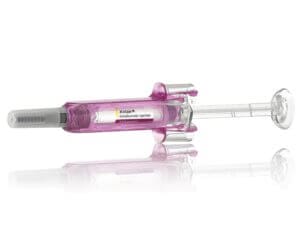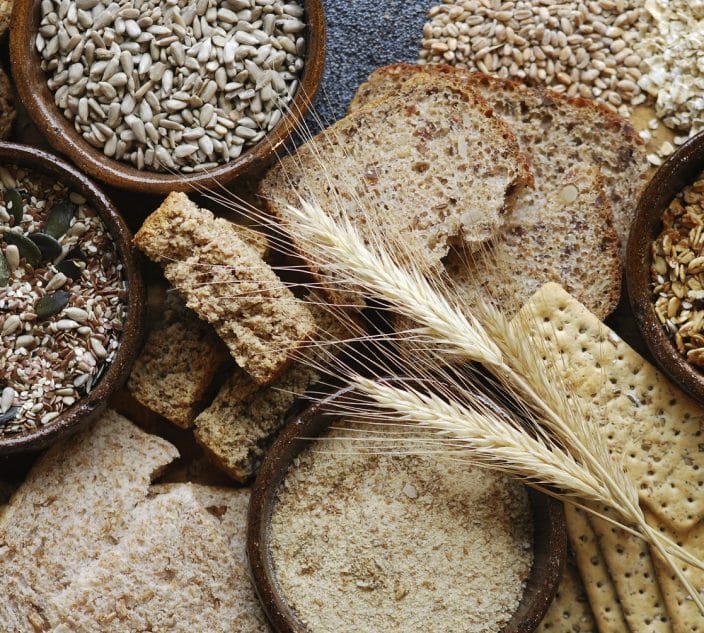
The Food and Drug Administration has approved omalizumab – the brand Xolair – to help those with one or more food allergies avoid serious reactions to accidental allergen exposures.
This makes Xolair the first FDA-approved medicine for reducing allergic reactions, including anaphylaxis, in those with more than one food allergy.
“Xolair offers patients and families an important new treatment option that can help redefine the way food allergies are managed and reduce the often-serious allergic reactions that can result from exposure to food allergens,” Dr. Levi Garraway, representing the drugmaker Genentech, said in a February 16 statement. Garraway is the company’s chief medical officer and head of Global Product Development.
The injectable drug is approved for children and adults ages 1 and older. Patients taking the medication will still be advised to avoid eating their food allergens. The medication, co-developed by Genentech and Novartis Pharmaceuticals, is designed to protect from reactions due to accidental exposures.
Dr. Jay Lieberman, an allergist-immunologist at University of Tennessee Health Science Center, calls the new treatment option exciting for patients, families and allergists.
The one other FDA-approved food allergy treatment is Palforzia, a specialized capsule form of oral immunotherapy (OIT), designed to increase tolerance to peanut. Some allergists also offer private practice OIT, which is not sanctioned by the FDA. In OIT, patients consume an allergen in gradually increasing amounts until a daily maintenance level is reached.
Now with Xolair, “it gives me an FDA-approved product to offer as an option to my patients, outside of OIT, who want to do something other than avoidance to protect their kids,” Lieberman says. This is so “they don’t have to worry about all these exposures they might encounter in the real world.” Of particular interest is the fact that Xolair can be used to treat multiple food allergies simultaneously.
Dr. Sung Poblete, CEO of the nonprofit FARE, welcomed the news of Xolair’s approval and called the need for a new treatment approach “critical”.
Kenneth Mendez, president and CEO of the Asthma and Allergy Foundation of America, noted the stress of living with food allergies. “This news offers hope to the many children and adults who may benefit from a new way to help manage their food allergies.”
How Xolair Works
Xolair isn’t a new medication. The FDA first approved it in the United States in 2003 to treat moderate to severe allergic asthma. It’s also now approved to treat chronic spontaneous urticaria and chronic rhinosinusitis with nasal polyps.
Xolair is an “anti-IgE” biologic, or lab-made antibody. People with food allergies produce IgE antibodies to their allergens, which then circulate in their blood. Xolair binds these IgE antibodies. This stops the IgE antibodies from binding to mast cells and basophils. Those are the immune system cells involved in setting off severe allergic reactions and anaphylaxis.
The FDA approval is based on data from the OUtMATCH study. The Phase 3 trial evaluated Xolair in patients aged 1 to 55 years allergic to peanuts and at least two other foods: milk, egg, wheat, cashew, hazelnut and walnut. At the start of the study, all participants did food challenges to confirm their allergies.
In the study, there was both an active treatment group with Xolair and a placebo group. The active treatment group received just-under-the-skin (subcutaneous) injections of omalizumab every two to four weeks. The other group received placebo shots.
After 16 to 20 weeks, participants completed four oral food challenges, during which they consumed gradually increasing amounts of the foods they’re allergic to. The food challenges tested whether they could consume at least 600 mg of peanut protein, and at least 1,000 mg of milk, egg or cashew protein without experiencing moderate to severe allergic symptoms.
Results That Convinced FDA
Study results showed 68 percent of patients who received the Xolair shots could tolerate at least 600 mg of peanut protein – about 2½ peanuts – without moderate to severe allergic symptoms. That compared to 5 percent of those who received placebo shots.
In other findings:
- 66% of those treated with Xolair could tolerate at least 1,000 mg milk (about two tablespoons of milk) without moderate to severe allergic symptoms. That compared to 11 percent who received the placebo.
- 67% treated with Xolair could tolerate 1,000 mg egg (about a quarter of an egg) without moderate to severe symptoms. By comparison, none in the placebo group tolerated that amount.
- 42% of those treated with Xolair could tolerate 1,000 mg cashew (about 3½ cashews) without moderate to severe symptoms. That compared to 3 percent given the placebo.
“These families have something to look forward to,” says Dr. Ahmar Iqbal, Genentech’s executive medical director. Knowing that they are likely to be more protected from the allergens “will create hope in people’s mind that wasn’t there before.” He hopes it will “lift them from anxiety and depression and all of the psychological effects of this condition.”
With the peanut results, the FDA noted that 17 percent remained at the entry level – only able to tolerate 100 mg of allergen. As a result, the FDA stresses the need, even with Xolair treatment, patients still practice strict allergen avoidance.
Iqbal says researchers are analyzing the data to learn more about why some didn’t respond.
Continued Allergen Avoidance
While patients in the study tolerated these amounts of food without experiencing moderate to severe reactions, treatment with Xolair should be used with continued food allergen avoidance.
As with Palforzia for peanut, “what these therapies are approved for is protection,” Lieberman says. “Raising that threshold of reactivity, so we should see less of those reactions to accidental ingestions to theoretically smaller exposures.”
Xolair Dosing, Safety and Insurance
Xolair dosing is 75 mg to 600 mg, once every 2 or 4 weeks. The dose and frequency are determined by the IgE level in the blood, and the patient’s body weight.
The medication is given by an injection, just under the skin, once every 2 to 4 weeks. The first few are given in a doctor’s office, but after that, it can be self-administered at home.
The most common adverse events associated with the medication were injection site reaction and fever. These occurred in a small percentage of patients. Lieberman says this is consistent with what has been seen in studies of Xolair for other conditions.
Since 2007, Xolair has carried a boxed warning that the injections can cause anaphylaxis. Lieberman says this is rare. When it does occur, it most often happens on the first couple of injections.
“The good thing about Xolair is we have been using it for 20 years now [in asthma]. The side effects have been very, very minimal,” he says.
What about insurance coverage for Xolair for food allergies? FDA approval often means that health insurers are more likely to offer coverage of a treatment. Plus, Xolair is a drug already getting coverage for other allergic conditions.
More On OUtMATCH Study
The OUtMATCH study was funded by the National Institute of Allergy and Infectious Diseases (NIAID) and conducted at 10 sites across the U.S. by Consortium for Food Allergy Research (CoFAR).
Additional stages of the trial are ongoing. These stages are looking at using omalizumab injections with multi-allergen OIT.
Related Reading:
Allergists Learn All about Omalizumab Study for Food Allergies
Palforzia Peanut OIT Sees Maturing of Immune System over Time
Study Finds Getting Epi Early Prevents Uncontrolled Allergic Reactions





